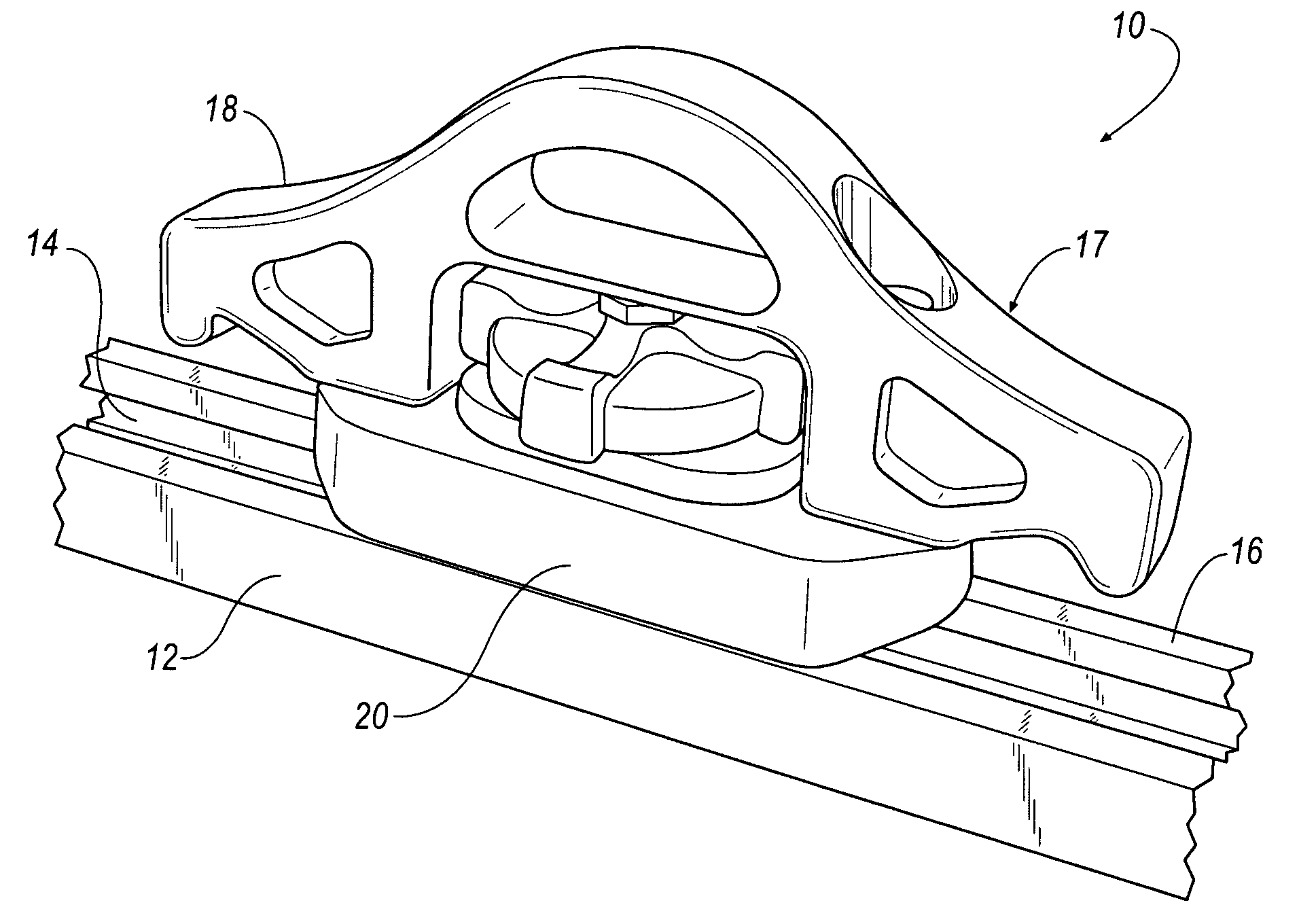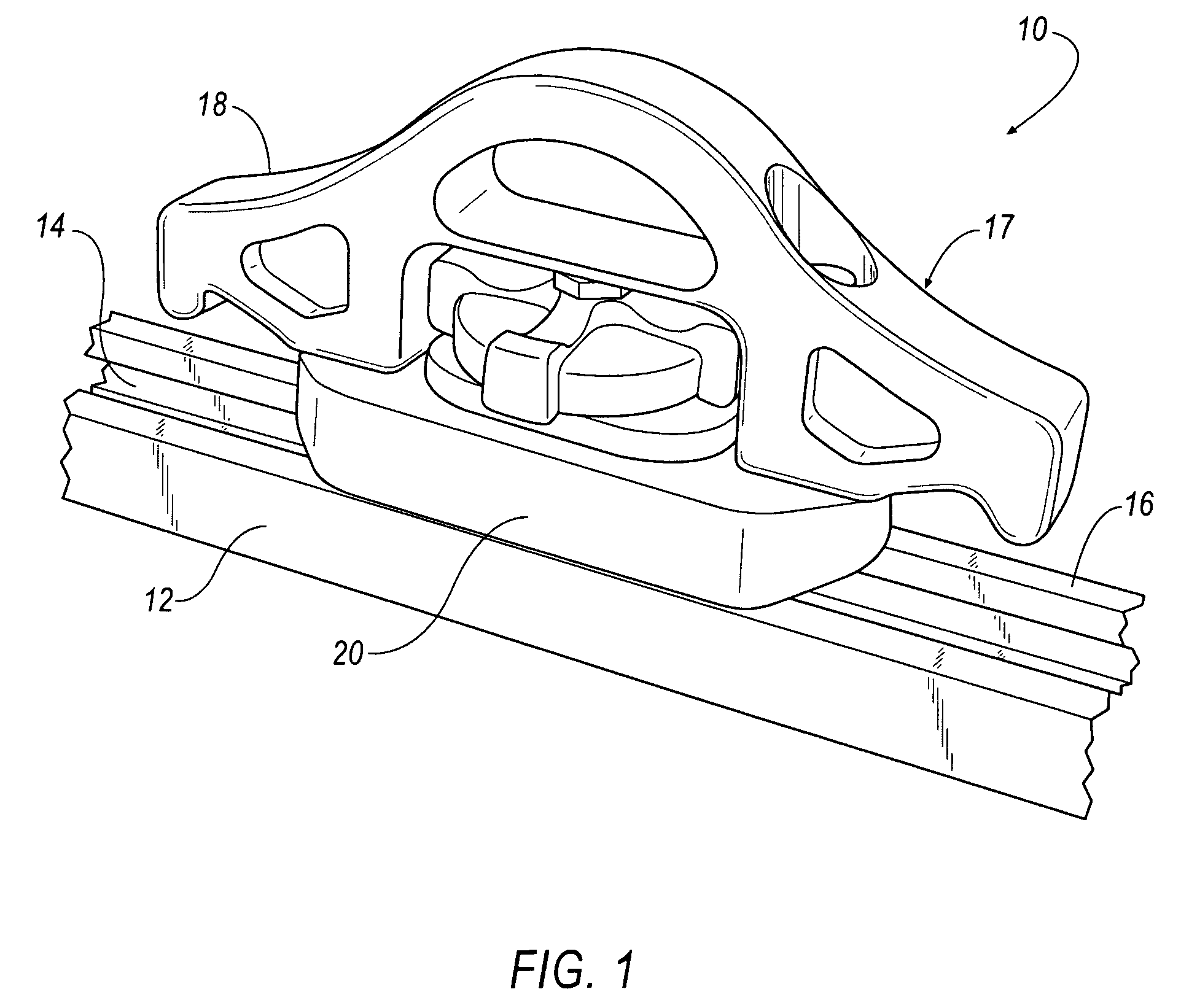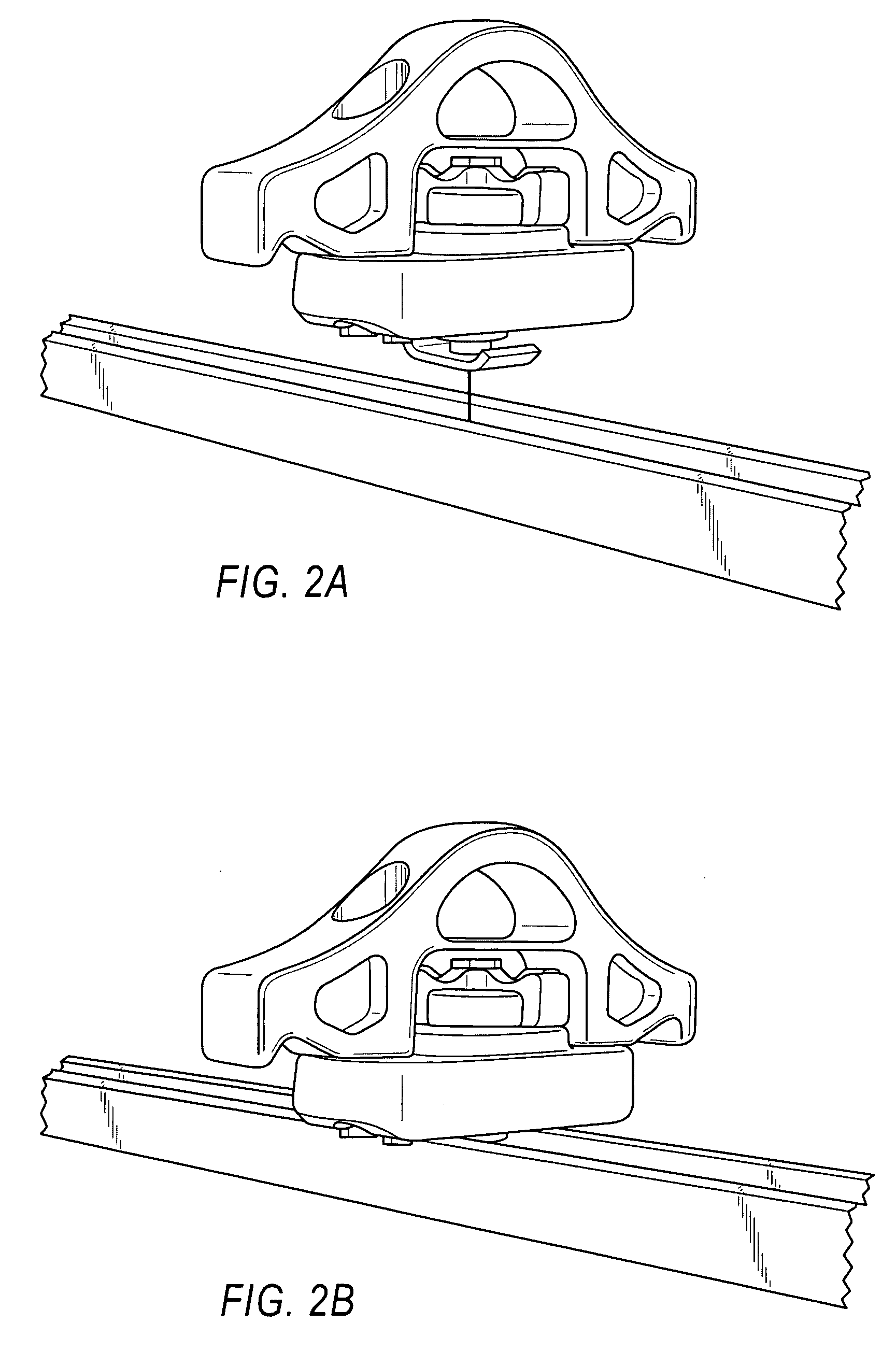Securement mechanism
a technology of secure mechanism and end cap, which is applied in the direction of load securing, threaded fasteners, transportation items, etc., can solve the problems of physical removal of users, loss of end caps, damage, etc., and reduce the overall length of rail available for us
- Summary
- Abstract
- Description
- Claims
- Application Information
AI Technical Summary
Benefits of technology
Problems solved by technology
Method used
Image
Examples
Embodiment Construction
[0033] Referring now to the drawings, exemplary embodiments are shown in detail. Although the drawings represent exemplary embodiments, the drawings are not necessarily to scale and certain features may be exaggerated. Further, the embodiments set forth herein are not intended to be exhaustive or otherwise limit or restrict the invention to the precise forms and configurations shown in the drawings and disclosed in the following detailed description.
[0034]FIGS. 1-7 are directed to an innovative securement mechanism including a tie-down cleat assembly 10 and mating component in the form of a locking member or rail 12.
[0035] Rail 12 is formed with a continuously extending channel 14 along its length. The channel 14 of the rail 12 is defined by a web or bottom surface 50 disposed between opposing siderails 52, legs 54 extending into the channel from a free end of each siderail (as best shown in FIG. 6). An end cap (not shown) may be permanently secured to the rail 12, which may or ma...
PUM
 Login to View More
Login to View More Abstract
Description
Claims
Application Information
 Login to View More
Login to View More - R&D
- Intellectual Property
- Life Sciences
- Materials
- Tech Scout
- Unparalleled Data Quality
- Higher Quality Content
- 60% Fewer Hallucinations
Browse by: Latest US Patents, China's latest patents, Technical Efficacy Thesaurus, Application Domain, Technology Topic, Popular Technical Reports.
© 2025 PatSnap. All rights reserved.Legal|Privacy policy|Modern Slavery Act Transparency Statement|Sitemap|About US| Contact US: help@patsnap.com



